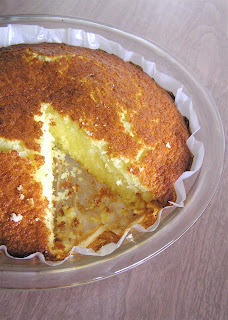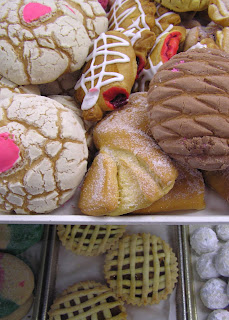
Gata
Old Country Bakery, $3.99/loaf
Tucked away in a white-bread strip mall in east Bellevue, the Old Country Bakery serves up a delicious and ethnically diverse range of European baked goods. The bakery has been in business for about 10 years, and under its current Armenian management for about a year and a half.
Seeing me frozen in gluttonous bewilderment in front of the rack of sweet breads, the cashier helpfully suggested the Gata, a top-selling Armenian loaf shaped something like a seat cushion. She described the filling as "vanilla cream" but when I tore in I found that the soft, eggy bread was actually stuffed with a delirious approximation of snickerdoodle dough--heady with vanilla, as dense as Play-Doh, and gritty with raw sugar.
Somehow I managed not to eat it all at once, and even shared a piece with my second-in-command, who usually takes an infuriatingly take-it-or-leave-it attitude towards sweets. His reaction: "And why did you not buy four of these?"
I also picked up an enormous chocolate Napoleon for $2, another difficult choice with fruit danishes, meringues, bundt cake, and three distinct styles of Baklava (traditional, Iranian, and Armenian) on offer. Thanks to a first-timer coupon available from their website, I also took home a loaf on the house (the "Georgian", below right, a huge round bread with an amusing orifice).
Old Country Bakery
900 160th Ave. NE #3
Bellevue, WA 98008
866/523-8169
Open daily, 8 to 8.























